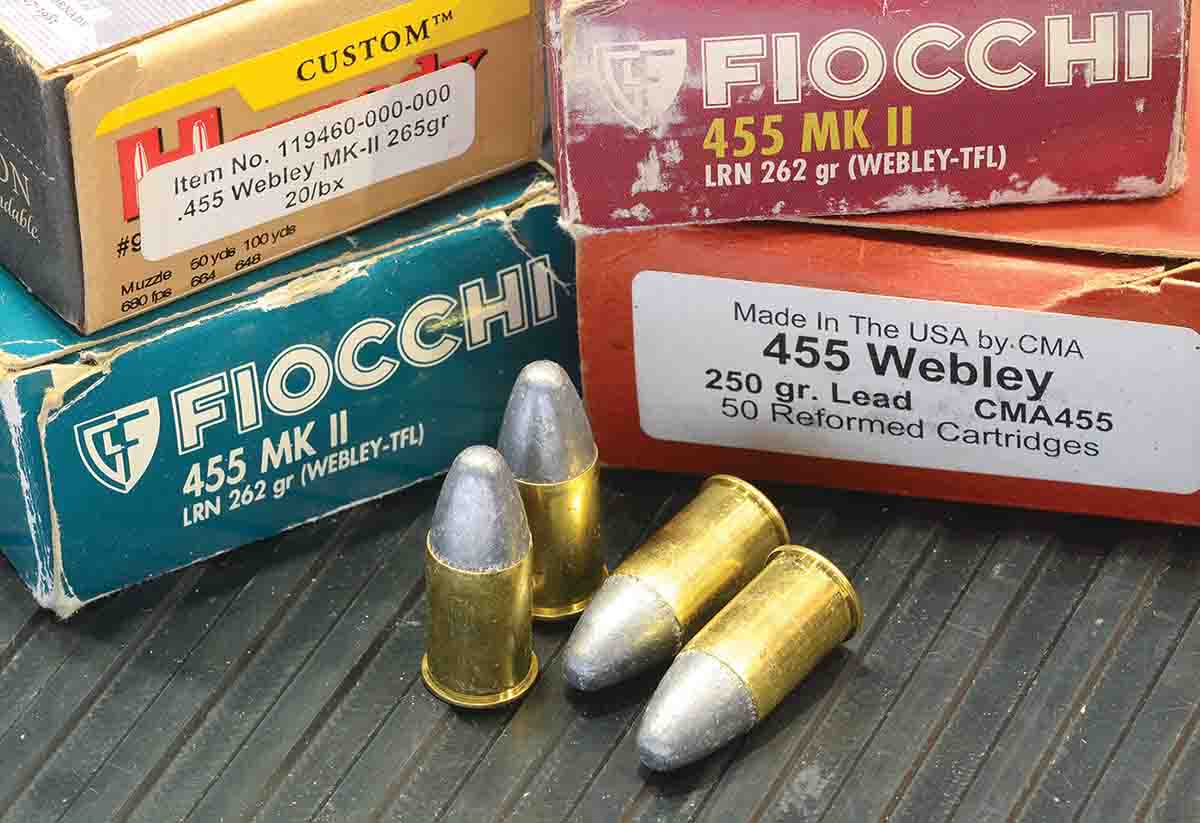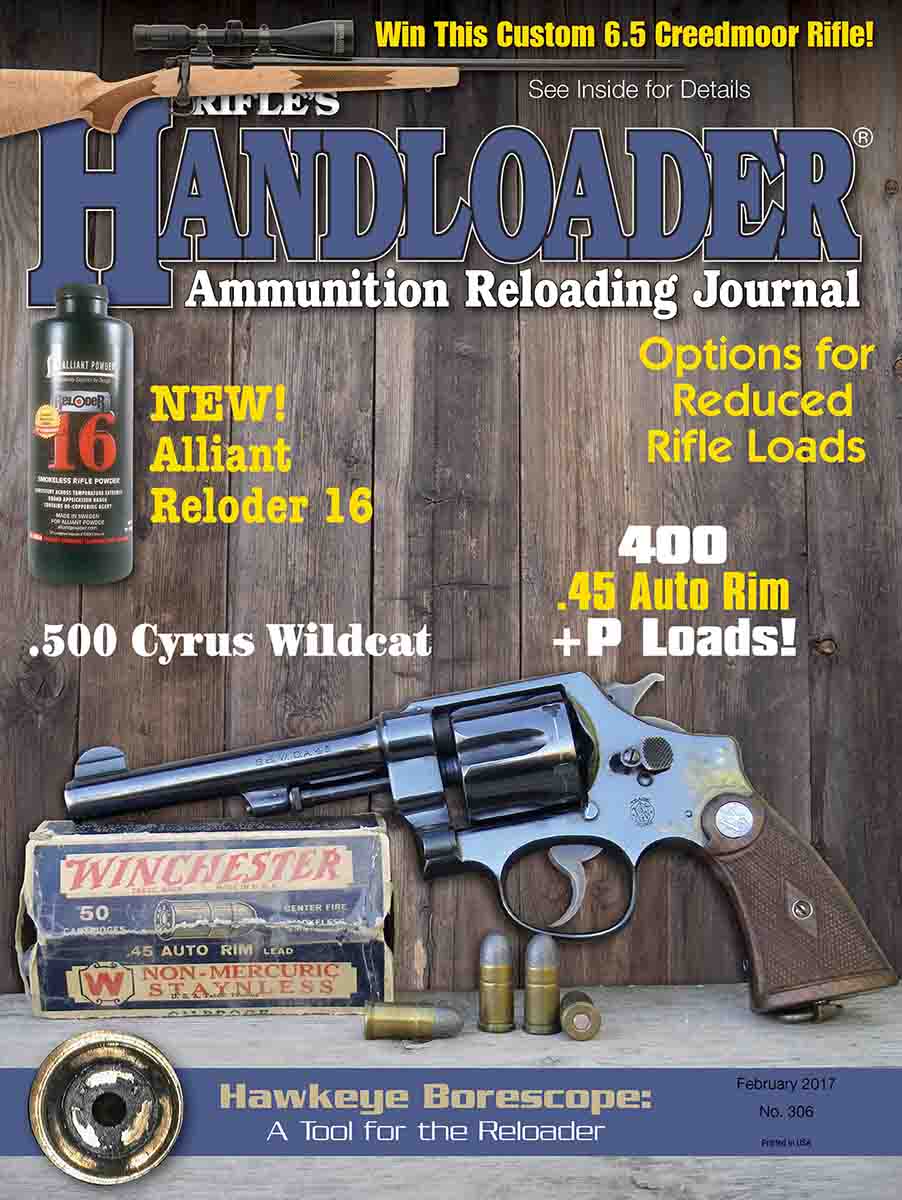In Range
Gift Horses and Handloading Treasure Troves
column By: Terry Wieland | February, 17
I paid John the handyman $200 for the first “treasure” and $50 for the second. I thought I was being generous; he thought I was being miserly. In a way, we were both right. The first installment of the treasure arrived in two cardboard boxes that he lugged into my office, puffing, from his pickup. It was the flotsam and jetsam of another guy’s loading room. The man had died, and his widow wanted “that horrid stuff out of the house.” His heirs took a few guns, and the rest were picked up by a team from an East Coast auction house with a large truck. That gives some idea of the collection’s value. Handyman John packed up the odd bits of ammunition and components no one else wanted and sold them to me – sight unseen, a pig in a poke.
The dead man was obviously a collector of eclectic taste, but it leaned toward my own. Old calibers and the bits and pieces thereof abounded: There were three different vintages of 7x57, partial boxes all, one of which dated back to the 1920s. It included half a dozen boxes, each of fairly recent factory .348 Winchester and .30-40 Krag ammunition, plus such oddities as some .38 Short Colt (Remington), .38 S&W (Peters) plus .41 Short Rimfire (Navy Arms) and an ancient box of Remington .38 Winchester (.38-40) carefully wrapped in cellophane to preserve its collector value. There was also some .44-40 in various configurations and six untapped boxes of .41 Long Colt – Winchester, Remington and Peters – of indeterminate age but obvious interest for collectors. Except for the .38-40 (and I’m not about to break up such a desirable item), I don’t own a gun for any of the above. But, well, you never know, do you?

There were also two cans containing gunpowder (more on this later), several partial boxes of cast and jacketed bullets in various calibers and about three thousand primers of different brands and vintages. Primers generally don’t go bad, so there was some of the money back right there.
One of my iron rules of shooting is that I will not use a handload put together by someone else, unless I know him and his habits extremely well. I also refuse to use any can of powder, smokeless or otherwise, that has already been opened. In a situation like this one, where I’d never met the man in question, an examination of the evidence contained in the boxes provided a pretty good picture. One of the cans of gunpowder was labeled “4895” but had a piece
of masking tape overtop with “4320” scribbled on it. I poured some into my hand. It was definitely not 4320, nor was it 4895, and I had some of each on hand with which to compare it. Aha, thinks I: This guy was a mite careless. When it comes to handloading, I really really dislike careless. That powder, whatever it was, was immediately scattered on the lawn.
This left me pondering some of the handloads. Rest assured, I wasn’t about to shoot any of it, but I was curious. One box contained a handful of .30-06, concocted with a variety of both bullets and primers. Who knew what might be packed inside? I put those aside for hazardous-waste disposal, and the same with a similar batch of .270 Winchester loads.
There was a box of 50 rounds labeled as .308 Winchester with 180-grain match bullets, but it was actually military tracer dated 1968. Hmmm.
By this time I was getting a pretty good picture of the character I was dealing with, and this brought me to a plastic cartridge box, of a type sold in the 1970s, with 50 rounds of seemingly well put together .44 Magnum loads. In the early days of the “Big .44,” devotees were known to play pretty fast and loose with loading formulas, but here was 50 rounds loaded with lead semiwadcutters. That lead could be melted down and the cases reused. Since I now view the future with some trepidation as one of shortages as far as the eye can see, artificially induced or otherwise, I felt a responsibility to salvage what I could.
Because the bullets were solidly crimped in place, no conventional bullet puller would do the trick. I devised a method using my trusty Redding loading press, raising the cartridge up through an unoccupied die cavity, gripping the bullet firmly with the wire-cutter of a hefty pliers braced against the top of the turret, and lowering the ram.
Some of the bullets were extracted fairly easily. With others, repeated tries only reduced the bullets to mangled and ungrippable (but still firmly seated) chunks of lead. That happened with 18 of the 50 rounds, and those were added to the hazardous-waste pile. On the first cartridge that did come apart, I poured the powder into a pan and put it on the scale. The powder itself was unidentifiable but weighed 24.5 grains. Even in Lyman Reloading Handbook No. 45 (1970), which is pretty adventurous, the only charge that approached that weight was a maximum load of IMR-4227, and this powder was not 4227. The maximum for 2400 was 22 grains, but this wasn’t 2400 either.
A few cartridges later, I found one charged with a different powder – a flake instead of black grains. It might have been Unique, and the charge was within reason for Unique, but since I had no way of knowing which of the remaining cartridges were which, even if I was unwise enough to shoot them, it made little difference. Of the 32 rounds from which bullets came out, about one-third held the presumed Unique, while the rest held that disquieting overcharge of powderus anonymous.
This exercise, by the way, took the better part of two hours. Salvage is a laborious process. From it, I gained about 9¢ worth of lead, and 32 additional .44 Magnum cases to go with the other 1,819 (approximately) in my store of brass. Hardly worth the time, but I’d done my bit for the environment and future firepower.
Oddly enough – evidence that there is a “god of handloading” – the trove also contained seven boxes of .455 Colt (aka, .455 Mk. II, .455 Webley, .455 Eley, etc.). Two boxes were factory Fiocchi (wonderful!), four were Hornady factory loads from a limited run made years ago (hallelujah!), and the fourth was concocted from re-formed brass by a small, now-defunct custom loading company in Colorado. This last would seem to be more fodder for the hazardous-waste pile, except that those .455 cartridge cases are simply too valuable to waste. Loaded with bullets shaped like a gnome’s hat, however, and solidly crimped in place, they will be the very devil to pull, but I’m working on it. That little hoard of rare and valuable .455 made the whole exercise worthwhile.
When Handyman John showed up two weeks later with a third box of handloader’s flotsam, I paid him $50 cash sight unseen. He left, convinced I was an ungrateful miser. That box, however, did not contain one single thing of value.
Out of all this, the main lesson – reinforced yet again – is to never never trust strange handloads or opened cans of powder. The secondary lesson is never turn down a box of handloader’s odds and ends. You just never know when you’ll find a treasure.


